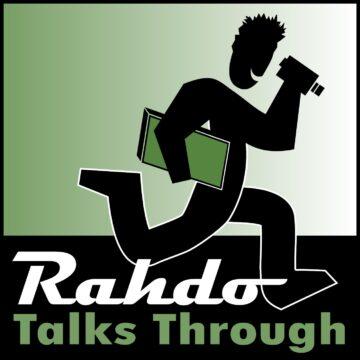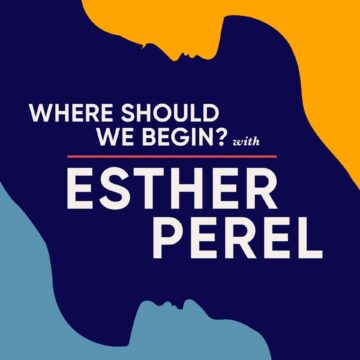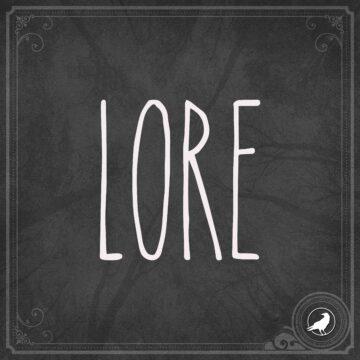The paired concepts of “innangard” and “utangard” regularly appear in discussions within the various Ásatrú and Heathen communities in the United States. Supposedly, they together form a key structural element of worldview for ancient Germanic polytheism and the modern reconstruction, recreation, and reimagining of the Old Way.
In reaction to the popularity of these terms on the American Heathen scenes, a recent YouTube video by the Old Norse translator Jackson Crawford forwards an argument that innangard and utangard are “two non-words in Old Norse.”
Like so much having to do with the intersection of ancient paganism and modern Paganism, however, the situation is complicated.
 |
| The Siege of Antioch in a medieval miniature (c. 1475) |
Mundane terminology
The Old Norse innangarðs does indeed exist, but it has the simple meaning “within doors” and lacks any deeper resonance. The related word innangarða also exists – with the plain meaning “within the ‘yard,’ inside the fence” – but it appears in church histories, not in texts connected to pagan myth, belief, or practice.
Likewise, the noun útangarða simply means “outside the yard (house)” and appears in Icelandic law codes that were not committed to writing until over a century after Iceland’s official conversion to Christianity in the year 1000. The earliest surviving manuscripts of these codes are from nearly three centuries after the conversion.
A form of the term appears in the mythological poem Fjölsvinnsmál as útan garða and simply means “outside the walls”; the earliest record of the poem is in paper manuscripts of the 1600s. The related term útangarðs means “outside the fence” and again has no profound sense attached.
The plural noun útgarðar means “the outer building” but appears in Old Icelandic mythology with the meaning “the lands outside the fences” as part of the name or title Útgarða-Loki. In the Edda of Snorri Sturluson, composed around 1220 – over two centuries after conversion – the god Thor travels eastward and crosses the ocean and a large forest before reaching the castle of the giant king called Útgarða-Loki (“Loki of Útgarðar”). In Snorri’s text, the name Útgarðr is used specifically to refer to the castle, not to any wider area.
Around the same time that the Icelandic antiquarian Snorri composed his Edda, the Danish historian Saxo Grammaticus wrote his monumental History of the Danes. It features several mythological tales of the Norse gods rewritten as semi-historical legends of human and superhuman heroes with Latinized names.
In one of these tales, the hero Thorkillus embarks on adventures that parallel those of Thor in the Icelandic texts. He sails over the ocean to a land of eternal night before crossing a dark land without grass to find an enormous cliff and enter a cave in which he finds a giant named Vgarthilocus. Modern editors have changed the giant’s name as recorded in the first printed edition to Utgarthilocus or even Utgartha-Loki to make it line up with the character in the Icelandic Edda.
The various versions of innangarða and útangarða that appear in the source texts seem fairly mundane, yet the Americanized terms “innangard” and “utangard” are invested with heavy meaning by Heathens in the United States.
The Americanization of Early Medieval Paganism
In the second volume of Our Troth, published by the U.S.-based organization founded by members of the Ásatrú Free Assembly and now known as the Troth, innangard is defined as “the enclosed world of the human community, within which order, law and security are found, and which must be protected from the outside (by defense against intruders) and from the inside (by maintaining frith [Old Norse “peace”]).”
Gravity is given to the term by an assertion that “[t]he opposition between the innangard and utangard is fundamental to the way the Teutonic peoples saw themselves in the world.” The corresponding utangard is defined as “the wild and chaotic world, home of outlaws, strangers, giants and monsters.”
In Asatru: A Native European Spirituality, written by the neo-völkisch American Stephen McNallen who founded both the Ásatrú Free Assembly and Ásatrú Folk Assembly, innangarth is made synonymous to “Folk Within.” This term is defined as “[c]ollectively, the people descended from the European tribes, wherever they may live or whatever their religious belief.”
The term utangarth is not in the book’s glossary, but it used in other Ásatrú Folk Assembly publications with the meaning “all forces gathered against the Folk.”
As with so much of Heathenry in the United States, a rather plain Icelandic concept is seen through a lens of prototypically American worldview and recast in a form that touches upon conservative American concepts of law and order, defense from intruders, paranoia about outsiders, and a concept of ancestry grounded in racialist ideas of Europeanness.
Like many modern Heathen concepts in this country, the source seems to be a Danish scholar named Vilhelm Grønbech.
“Our folk is Middle-garth”
In 1909, Grønbech published the first part of Vor Folkeætt i Oldtiden (“Our People in Ancient Times”), translated into English as The Culture of the Teutons in 1931. PDFs of the translated text continue to be circulated among American Heathens, and the book is regularly listed in Heathen bibliographies and recommended reading lists. Over the years, several Grønbechian concepts have become hardwired into modern Heathenry in the United States.
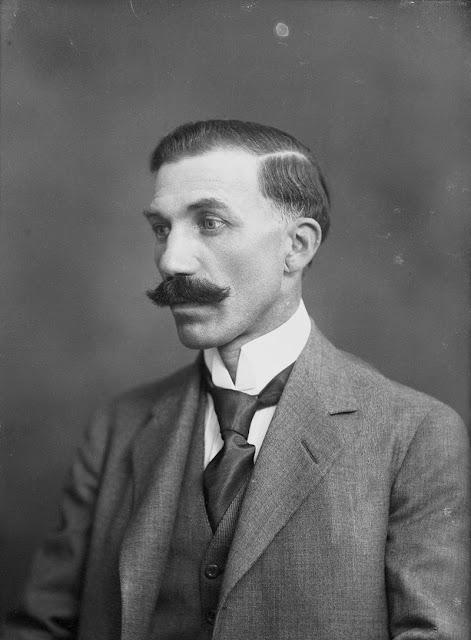 |
| Vilhelm Grønbech (1873-1948) |
Unfortunately, the book channels racialist völkisch concepts through Grønbech’s idiosyncratic readings of the Icelandic sagas. It forwards a supposed reconstruction of the inner workings of the souls of various ancient northern European peoples that are mashed together as Grøbech’s primeval Teutons, unquestioningly accepted to be “our forefathers.”
The work is saturated with nineteenth-century Romantic and pseudo-Nietzschean ideals of the Germanic “central will,” the transformative spiritual effects of physical violence, and a pan-Germanic identity shared across time by readers and subjects. Core to this ideology is Grønbech’s portrayal of “Middle-garth” and “Utgard.”
The Old Icelandic miðgarðr means “middle yard” or “central enclosure” and has cognates throughout the old Germanic languages. It refers to the world of humans, as distinct from those of gods, giants, and other mythological tribes.
In Grønbech’s work, the word takes on a völkisch meaning and is directly opposed to his conception of Utgard. “Our folk,” he writes, “is Middle-garth, and that which lies beyond is Utgard.”
Using language disturbingly similar to that of Third Reich propaganda and today’s white nationalism, he discusses killing foreigners as an act free of moral consequence shortly before asserting the mystic sacredness of the clan. Biological mysticism and anti-modernism appear as he writes that “the brethren of the clan are not only one soul but one bone, one flesh, in a literal sense that escapes modern brains.” Middle-garth, according to Grønbech, “belongs to men, and belongs to them because they are the strongest, the conquerors” who are fundamentally opposed to “the rabble of Utgard.”
More than recalling the infighting protagonists of the Icelandic sagas, this rhetoric is reminiscent of the Nazi appropriation and manipulation of Friedrich Nietzsche. The philosopher’s image of “the splendid blond beast, prowling about avidly in search of spoil and victory” was transformed by Nazi propagandists into a symbol of the conquering Aryan hero as part of their twisted justification for the mass murder of the Jewish population and the invasion of neighboring nations.
In Grønbech’s hands, the diverse polytheism and wide-ranging cultural exchange of the ancient world is transformed into a Romantic nationalist dualism of the unified Teutonic clan versus the Others who deserve no ethical consideration.
Unsurprisingly, the audiences for Grønbech’s public lectures skyrocketed during the Nazi occupation of Denmark. The Culture of the Teutons was translated into German by the National Socialist academic Otto Höfler, printed by a völkisch publisher under Nazi control, and included in the library of the Institute for Research of the Jewish Question, a planned Third Reich university system for research and indoctrination focused on anti-Semitic ideology.
Grønbech as guru
It is popular in American Heathenry to dismiss facts such as these by asking “should we throw away the runes because the Nazis used them?”
The counter-question I would ask is, “what in Grønbech appealed so powerfully to Nazi officers and ideologues?” As a follow-up, I would ask, “what are the implications of American Heathens being attracted to the same twentieth-century text that so captivated the leaders of the Third Reich?”
Although some Heathens view Grønbech as a neutral chronicler of ancient worldview who bases his conclusions on solid academic research, the mode of this work is much closer to the rhapsodic imaginings of Romantics waxing lyrical on the rough virtues of noble savages ancient and distant than it is to the focused, critical, and relentlessly sourced work of scholars in the 111 years since the work first appeared.
I have repeatedly read material by and had discussions with American Heathens who consider Grønbech’s theories to be not theories at all, but rather the factual and undeniable core beliefs of actual Heathens of the long-ago time, be they first-century continental Germanic tribesmen, sixth-century English pagans, or ninth-century Icelandic heathens.
Grønbech’s theoretical distinction between the supposed spiritual meanings of Middle-garth and Utgard has morphed into the general acceptance of the innangard-utangard dualism in much of modern American Heathenry of various flavors, with Middle-garth being replaced by innangard due to the regular use of Midgard for the earth (without spiritual or mystical connotations) and the more obvious in-out opposition of the adopted pair of terms.
An objection can be made that, aside from the purely linguistic issues, Norse mythology does indeed show a distinction between inner and outer worlds.
As described above, Thor must travel over some form of natural boundary in order to reach the land of the giants, the territory of the tribe of anti-gods that competes with the gods. This idea of crossing a boundary – river, sea, forest, wasteland, or mountain range – in order to move from the familiar inner world to the strange outer world appears throughout Indo-European mythologies, from Sanskrit to Norse, from ancient Indian epics to 19th-century German fairy tales.
Yet it is a narrative trope, not necessarily a spiritual teaching. The hero of the tale must leave home to have the transformative adventure, whether it is Rama going into Dandakaranya, Beowulf sailing to Heorot, or Thor traveling to Jötunheim. The journey is required by the demands of story, not the callings of spirit.
There’s still time to change the road you’re on
When American Heathens scoff at the idea of having basic empathy for anyone except their inner circle by saying “not my innangard, not my problem” or write social media posts describing people outside their insular Heathen community as subhuman denizens of the utangard, they are channeling the ideology of the early 1900s völkisch milieu, not any demonstrably real religious worldview of long-ago pagans.
When they speak of a unified and ultimately mono-racial modern Heathen in-group that stands in opposition to their African-American, Latinx, Muslim, Jewish, and LGBTQ+ neighbors, and when they speak of those fellow Americans as “stranger peoples,” they are reconstructing Third Reich ideology, not ancient heathen spirituality.
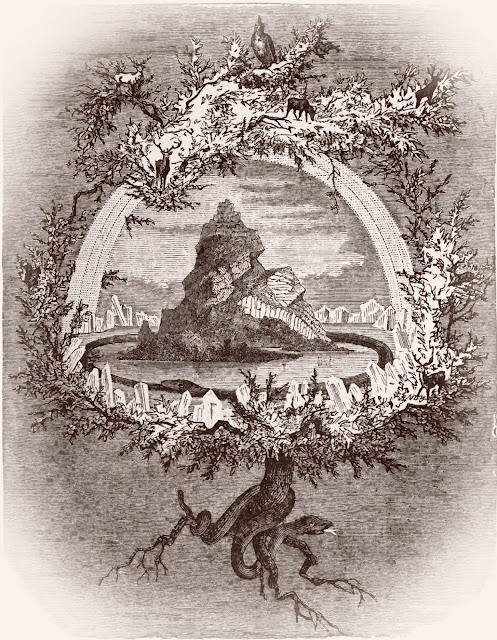 |
| The World Tree in an 1886 illustration by Wilhelm Wägner |
My original intention was to write a somewhat hippy-dippy article about “the expanding innangard” that challenged the inherent divisiveness of the Heathen concept by discussing widening rings of human connection, by building upon what I’ve written before on wyrd weaving us all together. Then I stumbled upon a reposting of the YouTube video about “two non-words in Old Norse,” started to do some digging, and ended up with yet another element of American Heathenry that has deeply problematic ties to racialist völkisch ideology.
The situation is less one of pure and ancient Heathen ideals that were temporarily appropriated by the Third Reich than it is of today’s Heathens accepting as ancient truths what are actually interpretations and manipulations of Old Norse material by Nazis and those whose writings were adopted as dogma by them.
Just how much of today’s Heathenry in the United States is really rooted in Romanticism, völkisch ideology, and actual Nazi propaganda?
If today’s Ásatrú and Heathenry really is focused on reconstruction, recreation, and reimagining of the Old Way, we need to be clear about which old way we intend to follow. For some, the difficulty will be in pruning away beloved elements with roots in a relatively recent and decidedly dark past.
Selected Sources
Laws of Early Iceland: Grágás I. Translated by Andrew Dennis, Peter Foote, and Richard Perkins. Winnipeg: University of Manitoba Press, 2006.
Lindow, John. Norse Mythology: A Guide to the Gods, Heroes, Rituals, and Beliefs. Oxford: Oxford, 2001.
Mees, Bernard. The Science of the Swastika. Budapest: Central European University, 2008.
–––. “Völkische Altnordistik: The Politics of Nordic Studies in the German-Speaking Countries, 1926-45.” In Old Norse Myths, Literature, and Society: Proceedings of the 11th International Saga Conference, edited by Geraldine Barnes and Margaret Clunies Ross, 316-326. Sydney: Centre for Medieval Studies, University of Sydney, 2000, 319.
Mitchell, P.M. Vilhelm Grønbech. Boston: Hall-Twayne, 1978.
Poetic Edda, The. Translated by Carolyne Larrington. Oxford: Oxford, 2014.
Saxo Grammaticus. The History of the Danes, Books I-IX. Edited by Hilda Ellis Davidson, translated by Peter Fisher. Cambridge: D.S. Brewer, 1996.
Simek, Rudolf. Dictionary of Northern Mythology. Cambridge: D.S. Brewer, 1993.
Snorri Sturluson. The Prose Edda. Translated by Jesse Byock. London: Penguin, 2005.
Stork, John. “Artifacts of Fascism: Nazi Books at the University of Cincinnati Libraries.” University of Cincinnati Digital Resource Commons website.
Vigfusson, Gudbrand. An Icelandic-English Dictionary. Oxford: Oxford, 1874.
Vikstrand, Per. “Ásgarðr, Miðgarðr, and Útgarðr: A linguistic approach to a classical problem.” In Old Norse religion in long-term perspectives: Origins, changes, and interactions, edited by Anders Andrén, Kristina Jennbert, and Catharina Raudvere, 354-357. Lund, Sweden: Nordic Academic Press, 2006.
Wellendorf, Jonas. Gods and Humans in Medieval Scandinavia: Retying the Bonds. Cambridge: Cambridge, 2018.
An earlier version of this article appeared at The Wild Hunt.




